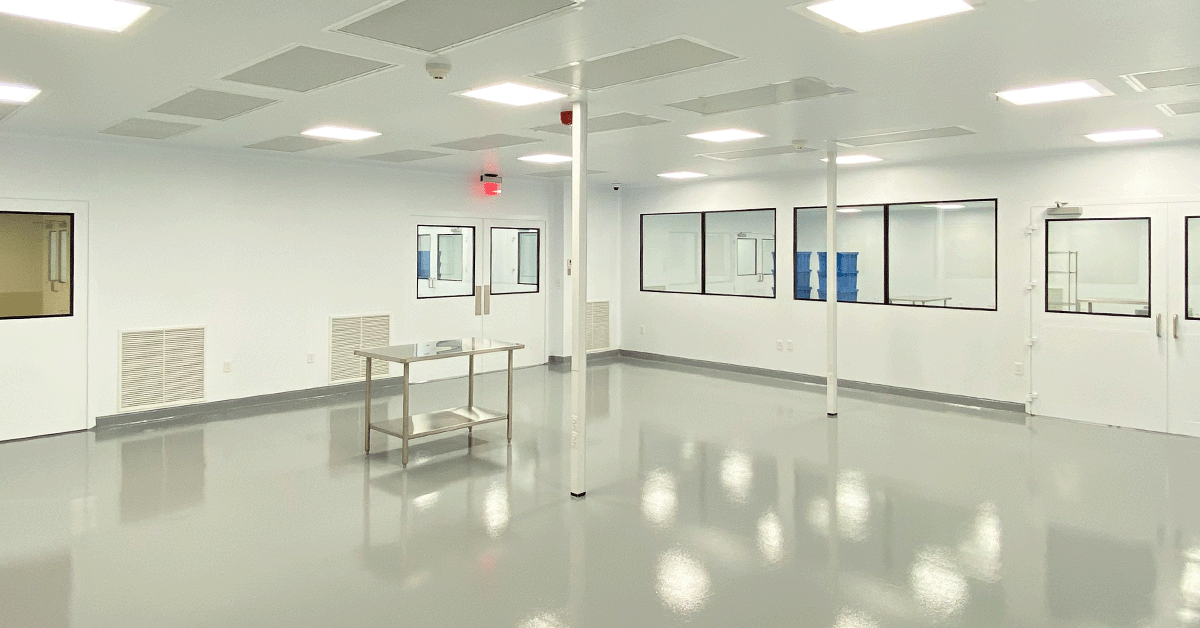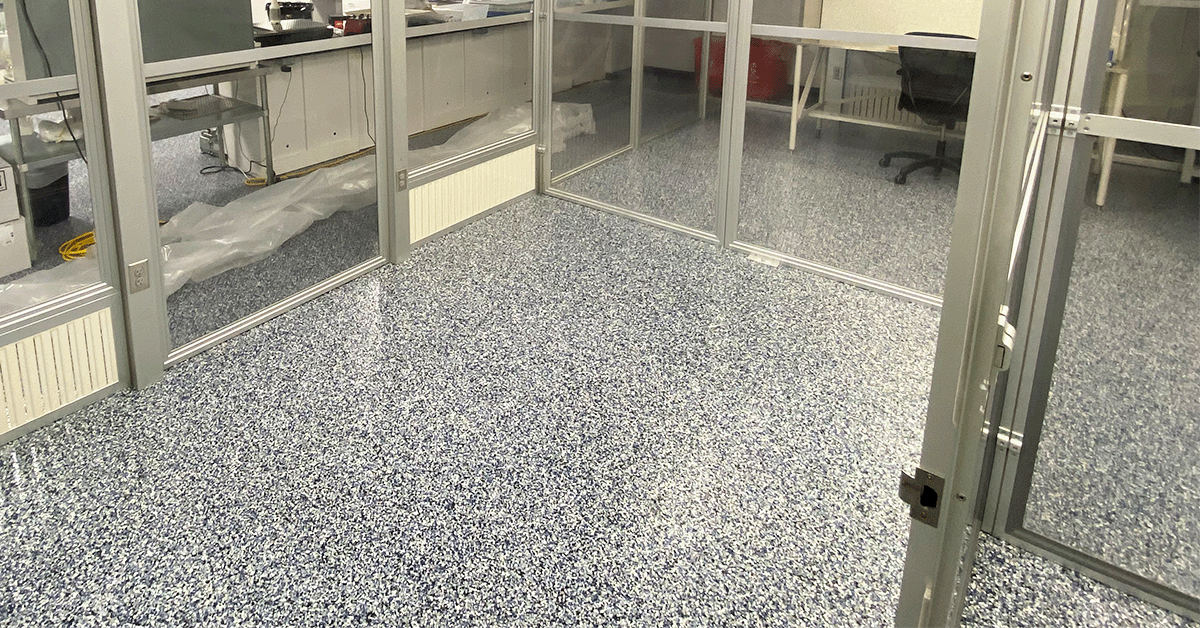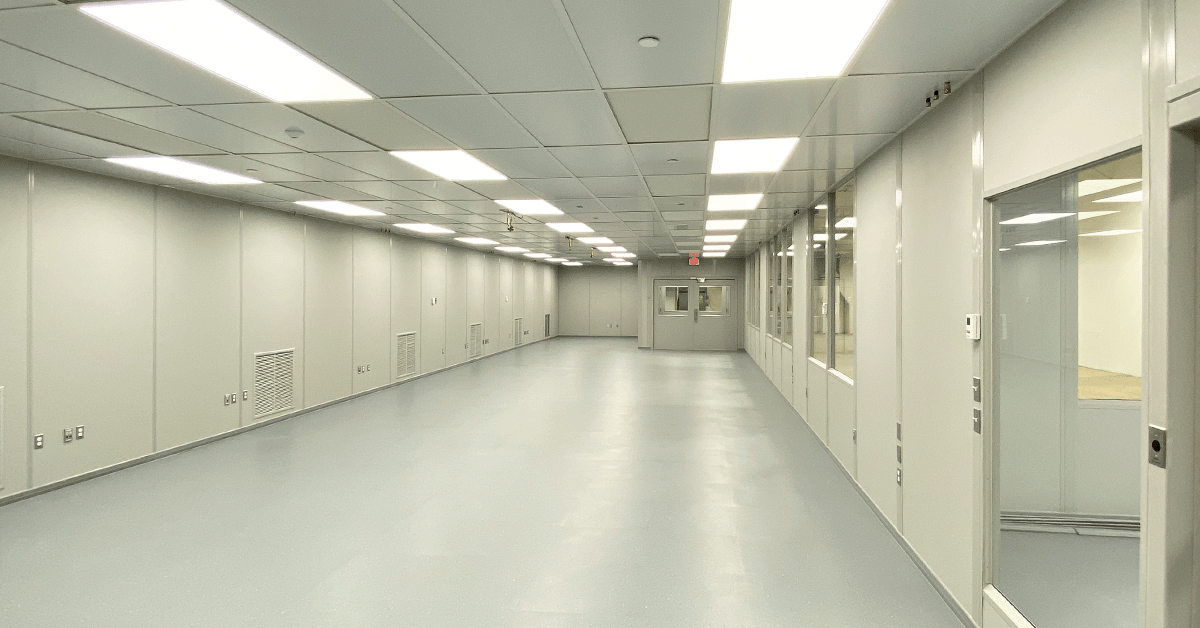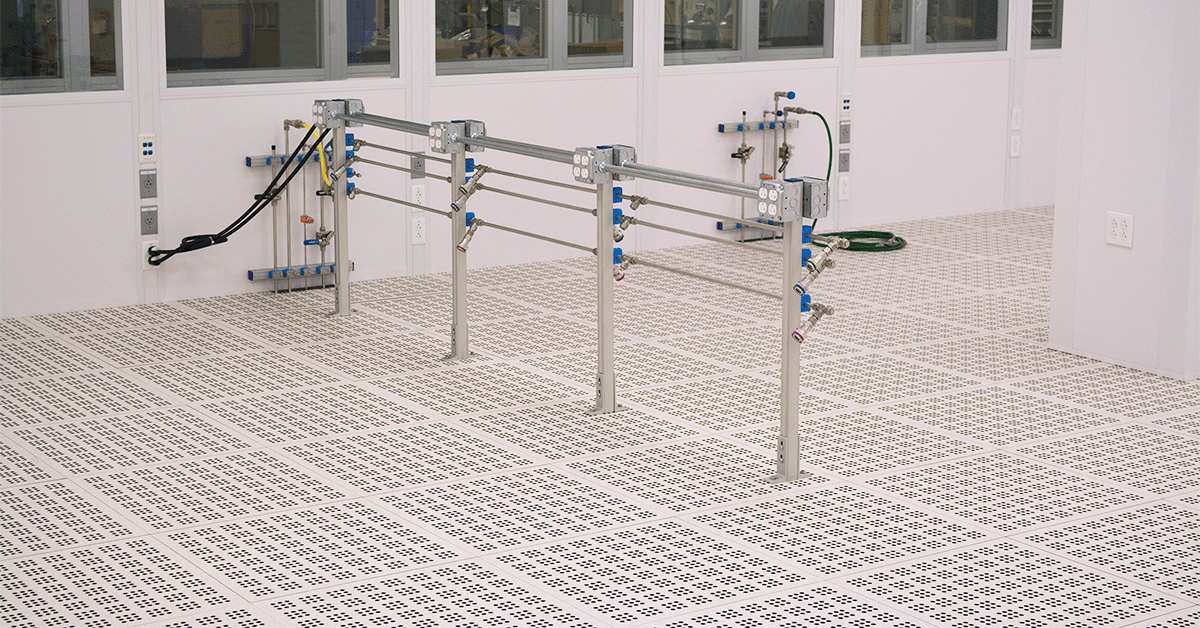*This post is part of a much larger pillar blog: The Complete Guide to Controlled Environments
Table of Contents
ToggleIntroduction
For operations that rely on controlled environments such as laboratories, data centers, and injection molding facilities, choosing the right cleanroom flooring is one component that plays a critical role in maintaining functionality and cleanliness.
The two most popular options for controlled environment flooring are epoxy flooring and raised flooring, each with their unique advantages and considerations.
In this article, we’ll explore the differences between epoxy and raised flooring to help you make an informed decision for your controlled environment. We’ll also be going over some key information you need to be aware of for both options that you may not already be aware of.
As always, keep an eye out for any blogs linked in this article that may provide more in-depth information on sections we mention.
Let’s dive right into it!
Epoxy Flooring: A Solid Foundation
The first of the two main controlled environment flooring options we’ll venture into is epoxy flooring. In this section, we’ll talk about the advantages of using epoxy flooring, and also mention some important things to keep in mind before selecting it for your operation.
So, what exactly is epoxy flooring?

What is Epoxy Flooring
Epoxy flooring is a seamless, resin-based system that provides a smooth, durable, and chemically resistant surface.
It is a popular choice for laboratories and pharmaceutical cleanrooms due to how easy it is to clean and how durable it is for applications that may have heavy equipment resting on it.
Outside of the controlled environment space, epoxy flooring is used in manufacturing plants, commercial and retail stores, hospitals, showrooms, amongst many other use cases.
It’s obviously very popular for a reason. Let’s discuss some of the biggest advantages epoxy flooring provides!

The Advantages of Epoxy Flooring
Now that you’ve got a good understanding of what epoxy flooring is, let’s go into some of the numerous advantages this type of flooring offers.
Chemical Resistance
Epoxy flooring can withstand a wide range of chemicals, making it ideal for labs. Cleaning solution can be acidic, basic, or reactive, making it corrosive for certain types of flooring. Choosing epoxy flooring means that you don’t have to worry so much about your cleaning regime wearing down your investment.
Durability
Epoxy flooring is known for its long lifespan, even in high-traffic areas. Due to the makeup of epoxy, heavy equipment can be placed on it with minimal impact to the structure itself. The durability of this flooring also means you don’t need to worry about the number of occupants your room will have.

Easy to Clean
We already briefly mentioned this in the “chemical resistance” section, but the reason why epoxy flooring is so easy to clean is due to the fact that it’s seamless.
Without seams or cracks, dirt and contaminants have fewer places to accumulate, improving the speed and efficiency of cleaning.
Customization
The final main advantage of epoxy flooring is its ability to be customized to the exact needs of the customer. This includes, but is not limited to, a range of different colors and patterns, surface texture for improved grip, and electrostatic dissipative properties for applications sensitive to static electricity.
Now that we’ve talked about the main advantages of using epoxy flooring, let’s go over some of the main considerations you need to take into account when deciding if you want to use epoxy.
GET THE LATEST INDUSTRY NEWS DELIVERED TO YOUR INBOX
Stay on the forefront of your industry with our weekly e-newsletter.
Things to Consider when Using Epoxy Flooring
Although there are so many upsides to using epoxy, there are two small drawbacks you’ll need to be aware of: installation and curing time.
When it comes to installation, this isn’t too big of a deal, considering every controlled environment is going to have a professional installed floor. Selecting a quality professional for flooring install will deliver the best final results..
The second slight drawback is that epoxy takes a bit of time to cure. This means that you will have to account for an increased installation time for this section of your build, and adjust the construction schedule accordingly to restrict any trades from contacting the surface during the cure time.
Raised Flooring: A Structured Approach
Alright, now that we’ve talked about everything you need to know regarding epoxy flooring, let’s take a look at raised flooring systems.
What is Raised Flooring?
A raised flooring system consists of a grid system with removable floor panels that create a space underneath. It’s commonly seen in data centers and larger scale operations that require a cleaner look to them.

The Advantages of Raised Flooring
There are three main advantages to implementing a raised floor.
Utility Management
Do you understand why we mentioned how common raised flooring is for datacenters and large operations? If you don’t, it’s because raised floor systems can conceal cables, electrical components, and other utilities underneath their grid, making an area have a much cleaner finish, eliminating surfaces for dust to settle, and eliminating cable safety hazards.
Airflow
If you’re constructing a cleanroom, it’s pretty obvious why this would be such a great benefit for you. Due to the grid structure, lovingly referred to as “swiss cheese flooring”, air can pass straight down from the ceiling uninterrupted, providing laminar flow from floor to ceiling, and a larger area for the volume of return air. The faster air cycling in the room also means that it’s cooler. This airflow also helps the lifespan of your HEPA and ULPA filters.
Adaptability
The third and final major benefit of a raised floor system is how adaptable it can be. Think of them like legos or puzzle pieces. Need to expand your cleanroom and floor? Easily done. Have to run new cables from that spiffy new machine? Not a problem.
Okay, now it’s time to talk about some things you need to keep in mind when it comes to raised flooring.
Things to Consider when Using Raised Flooring
There are three main things you need to know before you decide to install raised flooring into your new controlled environment.
Installation is more intricate and complex, meaning you need an especially skilled team, such as AVM Group, to put the flooring in for you. Not just any contractor will do.
Implementing a raised floor means that you should get comfortable with regular cleaning and maintenance.
Finally, due to how these panels are made, you’ll have less design options for aesthetic customization when compared to epoxy flooring.
Alright, let’s put this all together and make a proper comparison!

Choosing the Right Flooring for your Controlled Environment
These are the three most common comparison points we see from our customers.
Specific Needs
The type of flooring you will choose depends heavily on your business’ specific needs.
For example, for chemical resistance and durability, epoxy flooring is the better choice, if cable management and airflow are crucial, raised flooring is the ideal solution.
These options are not one-size fits all, so you may not even have the choice based on your unique situation.
Budget
In the construction world, it always comes down to budget.
Epoxy flooring is typically more cost-effective initially, but long-term maintenance should be considered when trying to calculate cleanroom ROI. Raised flooring may have a higher upfront cost due to installation complexity, but could hold up better, and be cheaper to mend, overtime.
Again, it’s hard to say definitely what will work best for your overall budget, but our team of designers will have no problem giving you a quote.
Aesthetic Preferences
Finally, you should consider the look of your flooring,
If aesthetics matter, epoxy flooring offers a wide range of customization options, while raised flooring is primarily functional, with limited aesthetic appeal.
Conclusion
Like we mentioned, the choice between epoxy and raised flooring for controlled environments depends on the specific requirements of your facility.
They both offer extreme upside, so there is no way to definitely answer which option is best.
Consider your needs, budget, and aesthetic preferences to make the right decision for your controlled environment.
Get in touch with our team if you’re looking to install a new floor in your cleanroom.



